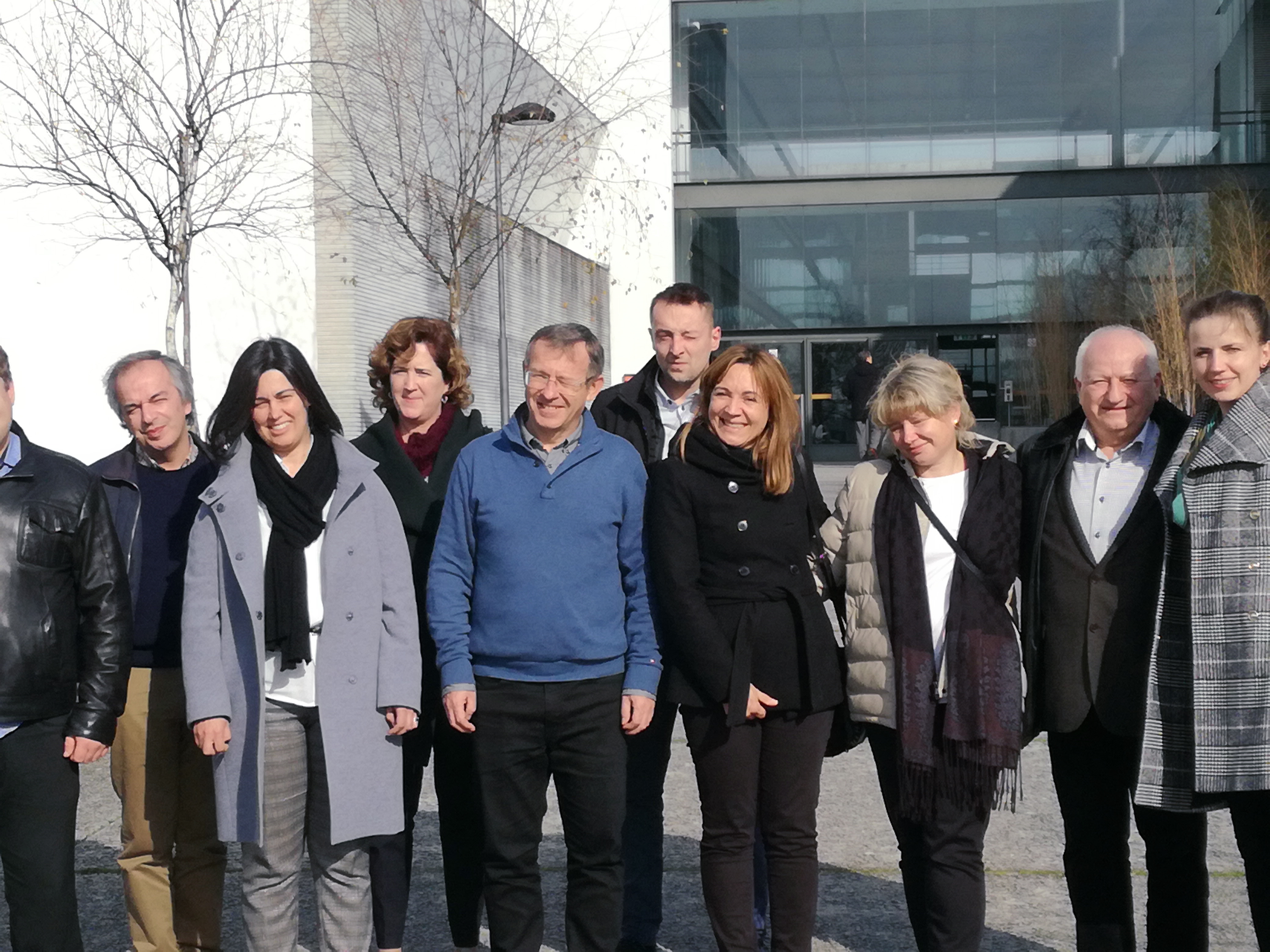On 6th February 2019 in Guimaraes, a workshop T5.1c was organised in accordance with the plan, entitled: Modelling of extruder vital construction elements – results of WP2. LUT and TUK scientists came to UMI to present Secondees from the industrial sector and the remaining members of the NEWEX project the results received in WP 2. In the second part of the workshop lectures and seminars were held to complement the presentations delivered during the workshops conducted under T5.4 on 13-14th November 2018, which concerned the simulation and optimization of plasticizing the polymer in the plasticizing system of the extruder. Therefore Mrs Anna Rudawska from LUT presented the results of task 2.1, Mr Ivan Gajdos from TUK showed the results of the task 2.2. Mrs Karolina Głogowska from LUT and Mr Emil Spisak from TUK acquainted the project members with the results of task 2.3, while the leader of the Portuguese team from UMI showed the results of tasks 2.4. and 2.5. As a result of the analysis and brief discussion, the vital extruder elements that will be made in the prototype were pre-selected. Then, Mr Lino Costa z UMI gave a lecture concerning „Multiobjective optimization”, in which he stated that the engineering problems often have several conflicting objectives. In particular, the optimization of an extrusion process or the design of an extruder is a hard task since it involves several important objectives to be optimized. The goal is to find the Pareto-optimal set, i.e., the optimal operating conditions and the geometrical parameters of extruders that yield the best performance for the manufacturing of a certain product. This optimization problem involves a considerable number of objectives. Multiobjective optimization is a very challenging research endeavor. Advantages, drawbacks and limitations of the classic scalarization methods and evolutionary algorithms were discussed. The problem of handling many objectives and the decision-making process were also addressed. Multi-objective approaches are valuable tools to assist the decision maker to select, from the Pareto optimal set, the more suitable solutions for the screw extrusion process. Then, Mr Antonio Gaspar Cunha presented two lectures entitled “Modelling of the single screw extrusion process” and “Modelling and Optimization: Cases studies”. He showed that the most of the real optimization processes are multi-objective. This is also true when dealing with polymer processing technologies, where it is necessary to determine the operating conditions and/or the system geometry automatically. For that purpose it is necessary to couple modelling routines with optimization routines capable to deal with the multi-objective nature of the problems. In this lesson, multi-objective routines were used to optimize the process of scaling-up in the case of single screw extrusion and on the optimization of the operating conditions and/or screw configuration for the case of co-rotating twin-screw extruders. The results obtained show the validity of the approach proposed. All materials are available in the form of relevant reports and deliverables available from the Project Coordinator, on the Participant Portal website and on the Newex project website, and some of them in the form of quizzes.

